Welcome to On Verticality. This blog explores the innate human need to escape the surface of the earth, and our struggles to do so throughout history. If you’re new here, a good place to start is the Theory of Verticality section or the Introduction to Verticality. If you want to receive updates on what’s new with the blog, you can use the Subscribe page to sign up. Thanks for visiting!
Click to filter posts by the three main subjects for the blog : Architecture, Flight and Mountains.

Introduction to Verticality
Ever since humans descended from the trees and out onto the savannah, we’ve gazed upward in wonder at the sky and the stars. Until fairly recently in our history, this space above our heads was a mystery. Our ancestors would witness the diurnal movements of the Sun and the Moon, and the brilliance of a glowing sunrise or sunset. The clouds would drop water and thundering bolts of light and energy. At night, they would witness a spectacular tapestry of light-emitting dots, and connect them into elaborate shapes. The sky has been a continual source of wonder throughout our history, and we’ve spent countless hours thinking about the world we see above our heads.
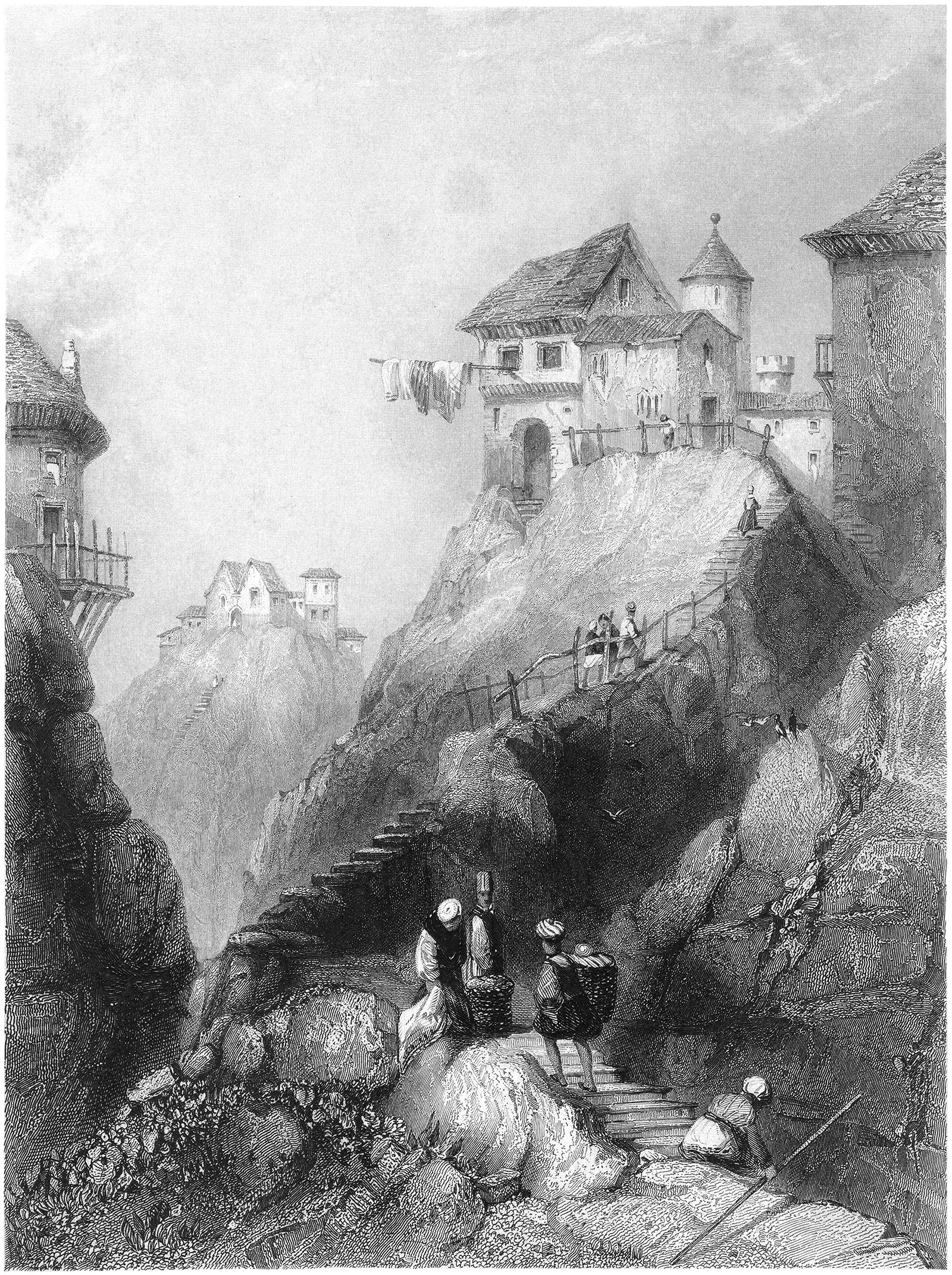
The Need to Build on High
There’s a need among humans to occupy and build on the highest places around. These places act like magnets for anyone living around them. There are many reasons for this, but they all boil down to verticality. Occupying or building on a high place means you’ve done battle with gravity, and you’ve won.
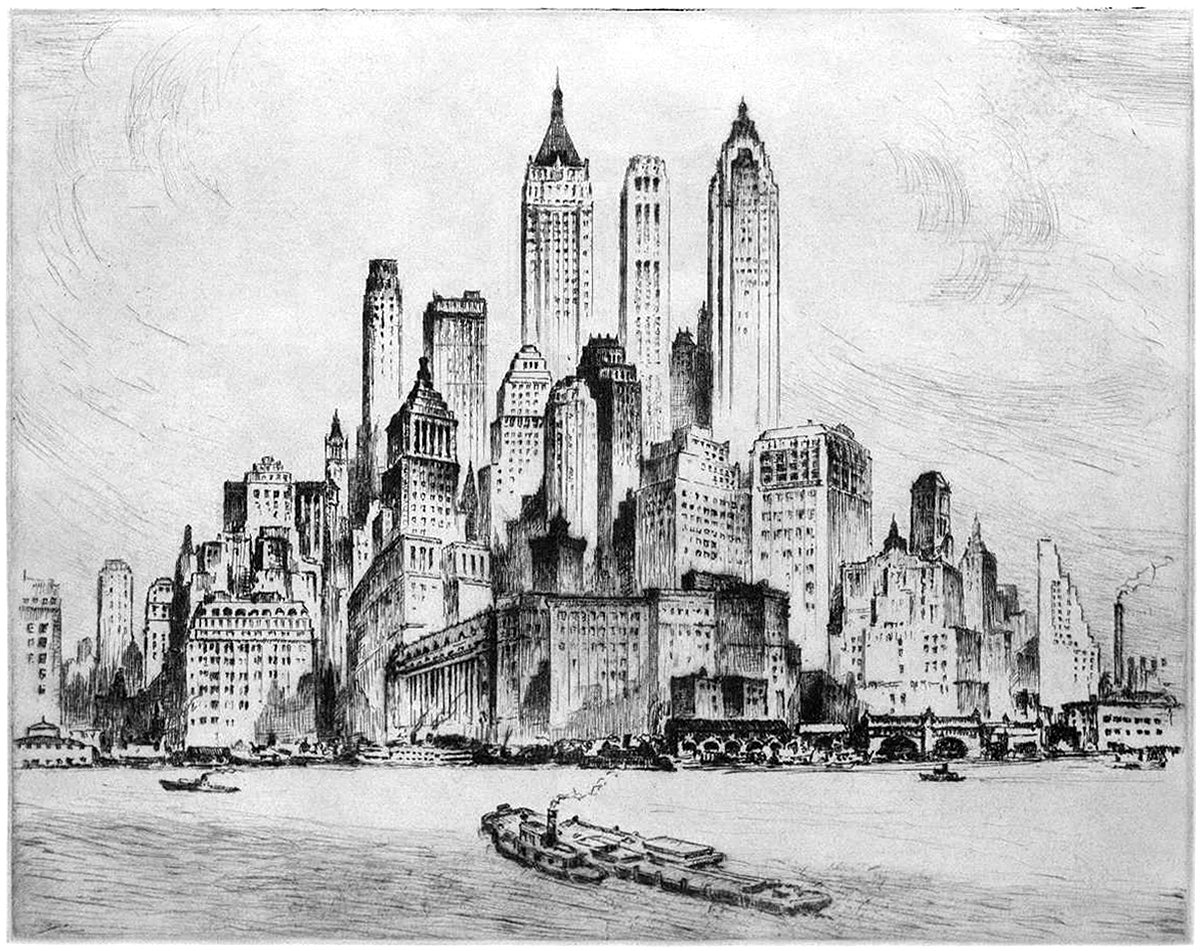
Nat Lowell and the Tip of Manhattan
Pictured here is an etching by artist Nat Lowell, showing the southern tip of Manhattan, circa 1940. The perspective is from the harbor, and Lowell focuses on three towers, which are the tallest of the bunch. From left to right, they include 40 Wall Street, 20 Exchange Place, and 70 Pine Street. The composition isn’t literal, and Lowell has taken some liberties to arrange the buildings into a mountain of sorts, with the three aforementioned towers at the summit.
“Thousands of tired, nerve-shaken, over-civilized people are beginning to find out that going to the mountains is going home.”
-John Muir, Scottish naturalist and mountaineer, 1838-1914

The Verticality of Clouds
I recently climbed Mount Saint Helens in Washington state, and the experience brought me face-to-face with the verticality of clouds. The photo above was taken just after dawn, and you can see two very different types of clouds in the sky. Just above my head was a dense, thin layer of altostratus clouds, which looked solid and dark from below. Far above this was a wispy pattern of cirrus clouds, which was much lighter in appearance. In addition to these, there were also groups of low-lying stratus clouds in the valleys below. What struck me in that moment was each of these cloud types was created by the exact same elements, the only difference was their height above the surface.
“During my thirty-three hours on the Eiger I seemed to have been in a dreamland; not a dreamland of rich enjoyment, but a much more beautiful land where burning desires were translated into deeds.”
-Jürgen Wellenkamp, German mountaineer, 1930-1956.
“Mountaineering offers an emotional experience which cannot otherwise be reached.”
-George Mallory, English Mountaineer, 1886-1924.

The Altitudinal Decrease in Vegetation
Pictured above is an illustration from the 1860s by Jean-Augustin Barral, titled Décroissement Altitudinal de la Végétation, which is French for The Altitudinal Decrease in Vegetation. It’s a beautiful work that attempts to categorize vegetation types by elevation, which is known as altitudinal zonation. Barral gets the overall concept correct, but we now know the details to be much more nuanced and complex than his drawing suggests.
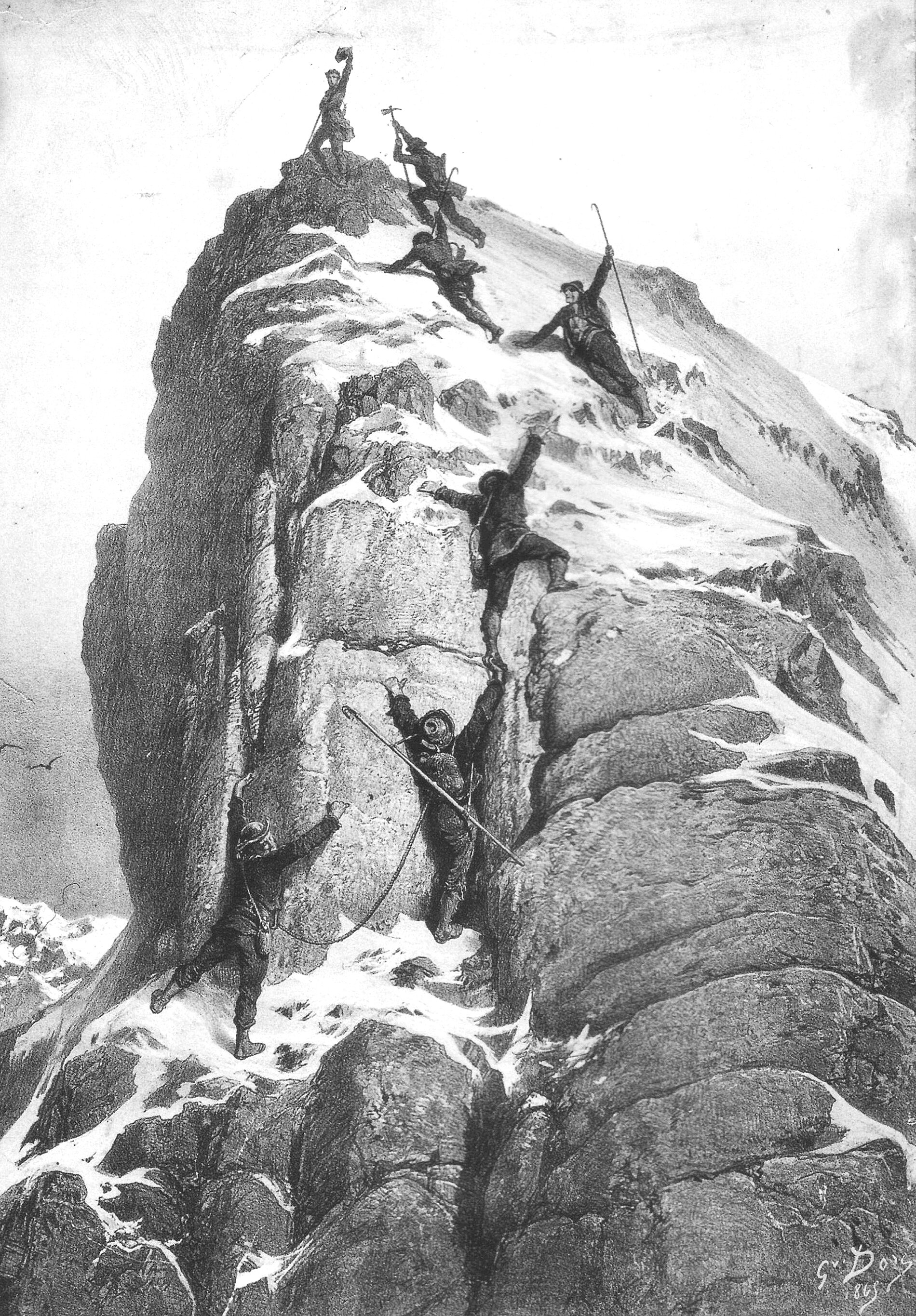
The First Ascent of the Matterhorn
There are few mountains in the world as instantly recognizable as the Matterhorn. Located in the Swiss Alps, this majestic pyramid of gneiss straddles the border between Switzerland and Italy and looms over the Swiss mountain town of Zermatt. Due to its location and visibility, it is legendary within the history of mountaineering . In the 1860’s it was the focus of an international competition to be the first to reach its summit. This story, which includes the first successful summit of the mountain, is a tale of triumph and tragedy, and it serves as a cautionary tale for mountaineers to this day.
"On the summit, your soul becomes part of the mountain. It makes you feel alive."
-Nirmal “Nims” Purja, Nepalese mountaineer, born 1983.
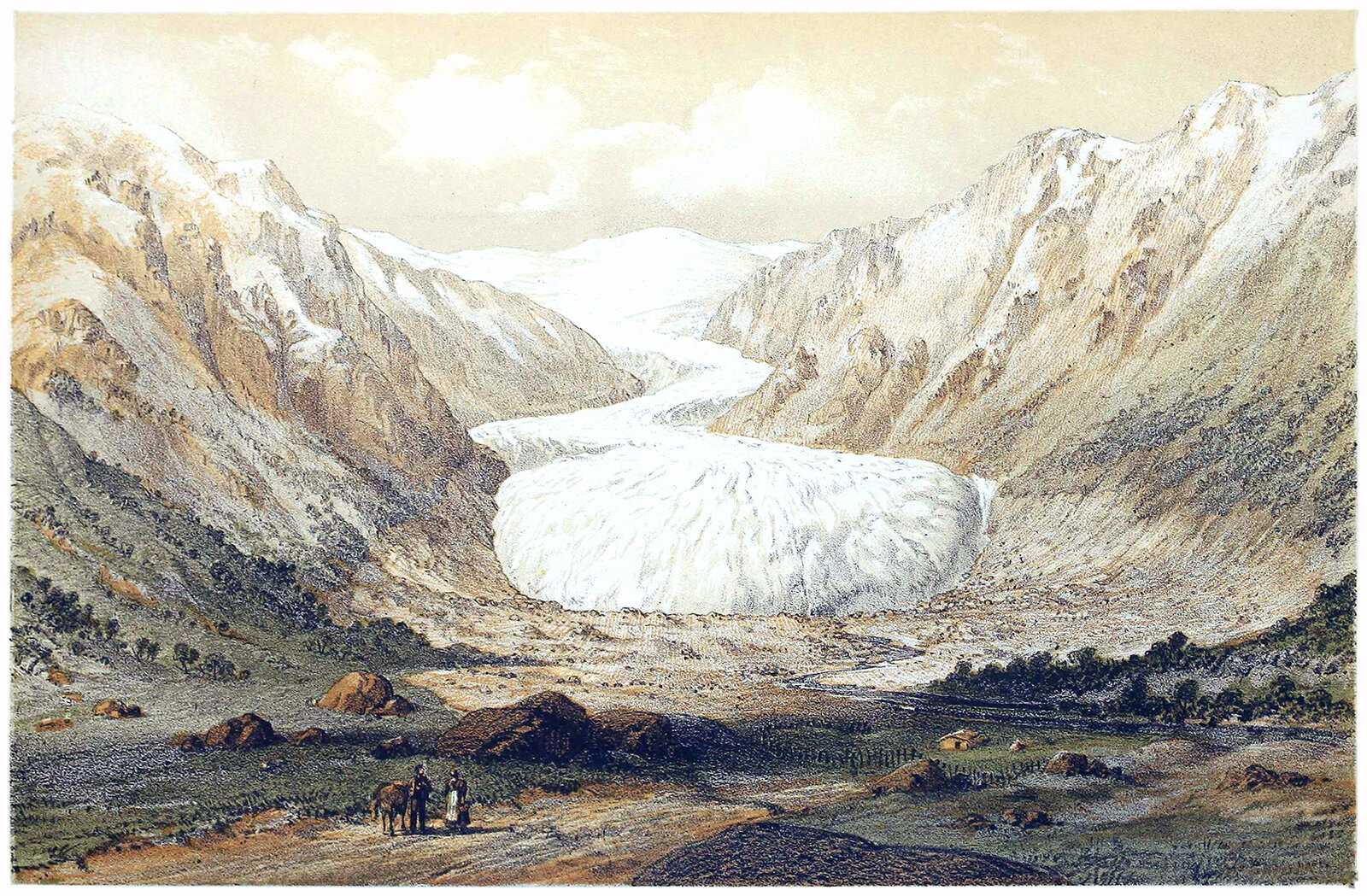
Mountains and Glaciers
The relationship between mountains and glaciers is a fascinating one. Where glaciers exist, the morphology of a mountain created the conditions necessary for a glacier to form. Once formed, a glacier’s growth and movement will slowly erode away the very mountain that created it. Over time, this movement carves and changes the landscape, resulting in moraines, cirques, fjords, and various other landforms.

The Towers of Svaneti
Joseph Campbell once said that you can tell what’s informing a society by what the tallest building is. The Towers of Svanetia are a perfect example of this. Svanetia is a mountainous region in Georgia dotted with small, medieval villages. These highland villages are home to a unique type of tower house, which gives us a window into the history and culture of the region. Pictured above is an illustration of one such village and its towers.
“It is because [mountains] have so much to give and give it so lavishly to those who will wrestle with them that men love the mountains and go back to them again and again.”
-Sir Francis Younghusband, British explorer and mountaineer, 1863-1942.
“The highest of mountains is capable of severity, a severity so awful and so fatal that the wiser sort of men do well to think and tremble even on the threshold of their high endeavour.”
-George Mallory, English Mountaineer, 1886-1924.
"[Getting to the top of Everest is] a matter of universal human endeavor, a cause from which there is no withdrawl, whatever losses it may demand."
-Günter O. Dyhrenfurth, German mountaineer and geologist, 1886-1975.
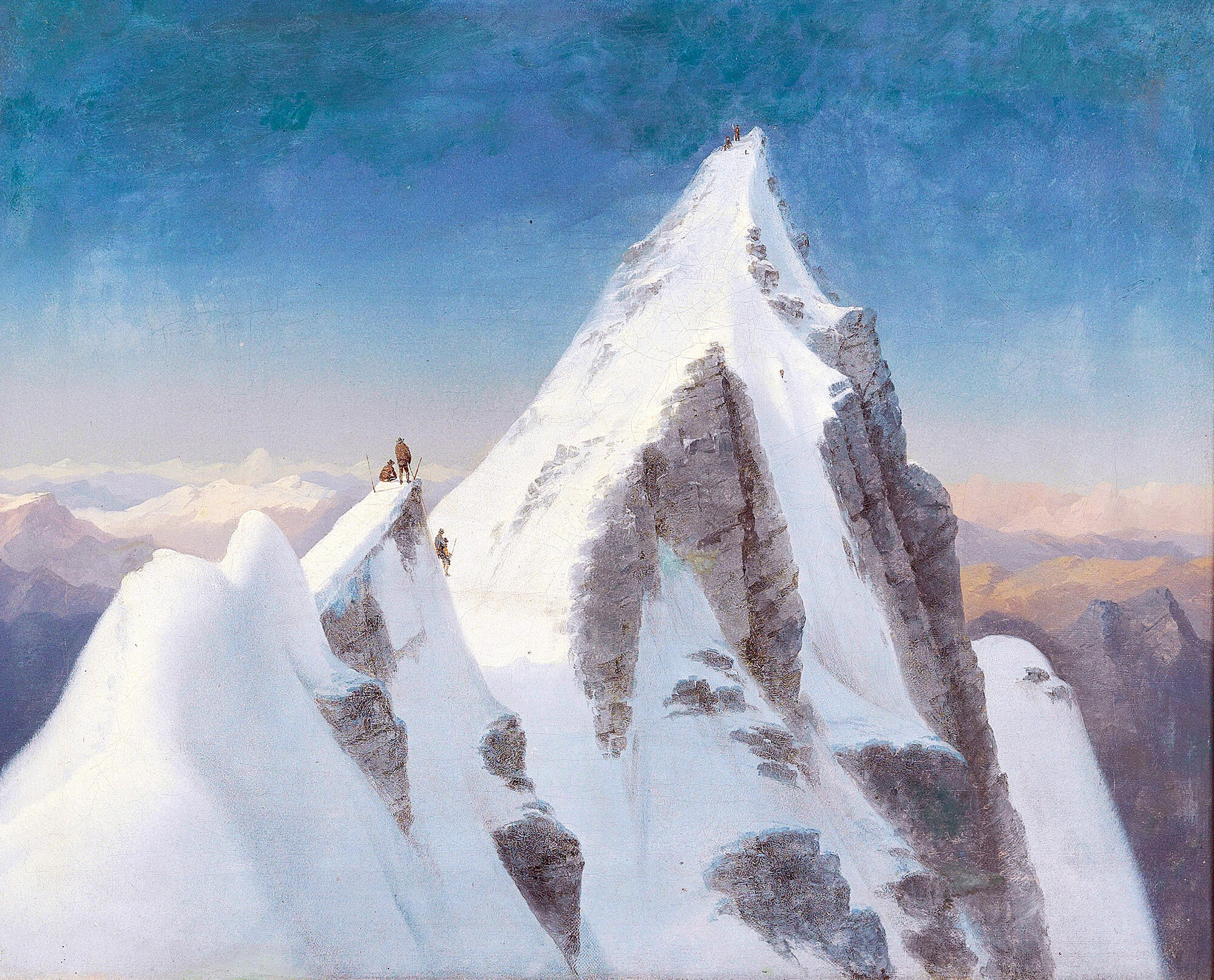
Markus Pernhart’s Großglockner Paintings
The above painting was created in 1871 by Austrian artist Markus Pernhart. It shows the peak of the Großglockner, or Grossglockner, which is the tallest mountain in Austria. It does a great job capturing the contrasting scales of human and mountain. If you look closely, there are two groups of mountaineers pictured atop each peak, dwarfed by the jagged forms of snow and rock. This puts the focus of the painting on the majestic beauty of the mountaintop, rather than the effort it took the mountaineers to reach it. In many ways, these mountaineers are meaningless when compared to the mountain itself. The Großglockner has been around for millennia, and will still be around long after this expedition is finished.
“Is this the summit, crowning the day? How cool and quiet! We're not exultant; but delighted, joyful; soberly astonished.”
-George Mallory, English mountaineer, 1886-1924.

The Woolworth Building Tower Above the Clouds
The Woolworth Building was the tallest building in the world when it was completed in 1913. It towered above Lower Manhattan and dominated the skyline of the city. The above photograph was taken in 1928, and it shows the crown of the tower poking up through the clouds, inhabiting an otherworldly realm of sunlight and clouds. This is an iconic image, because it shows that buildings as tall as this achieve verticality for their occupants. On a day like this, the upper reaches of the building are truly in the sky.
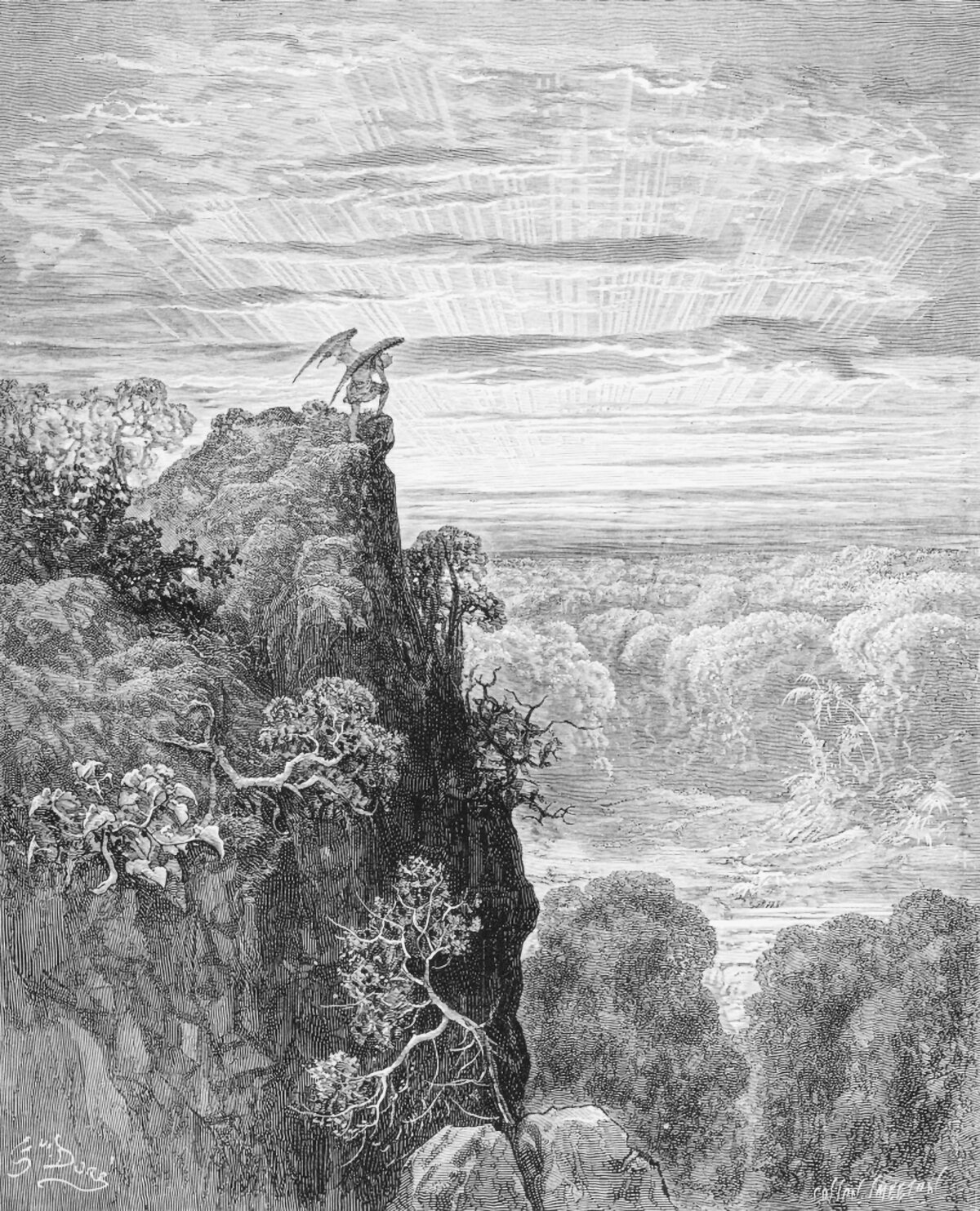
Satan Overlooking Paradise by Gustave Doré
This is an illustration by Gustave Doré for John Milton’s epic poem Paradise Lost. The poem deals with the biblical narrative of original sin, and the first half of the story focuses on Satan and his fall from heaven. In this part of the story, Satan is standing on a mountaintop, overlooking the earthly paradise and considering his plan to corrupt Adam and Eve. Milton is using verticality to enhance the drama of the moment, and by placing Satan in such a high place it allows him to examine his motivations more clearly.

Anecdotes : Earning the Summit
I recently had the opportunity to summit Mount Washington in New Hampshire, and the experience brought to light a few aspects of verticality for me. It’s the tallest peak in the Northeast US, famous for it’s erratic weather patterns. As such, it’s been commercialized with a cog railway, auto road, visitor center and museum in order to attract tourist dollars to the park. This makes for an interesting summit experience, which is quite different than a typical mountaintop. Put simply, this is a summit you don’t have to earn by climbing up to it.
